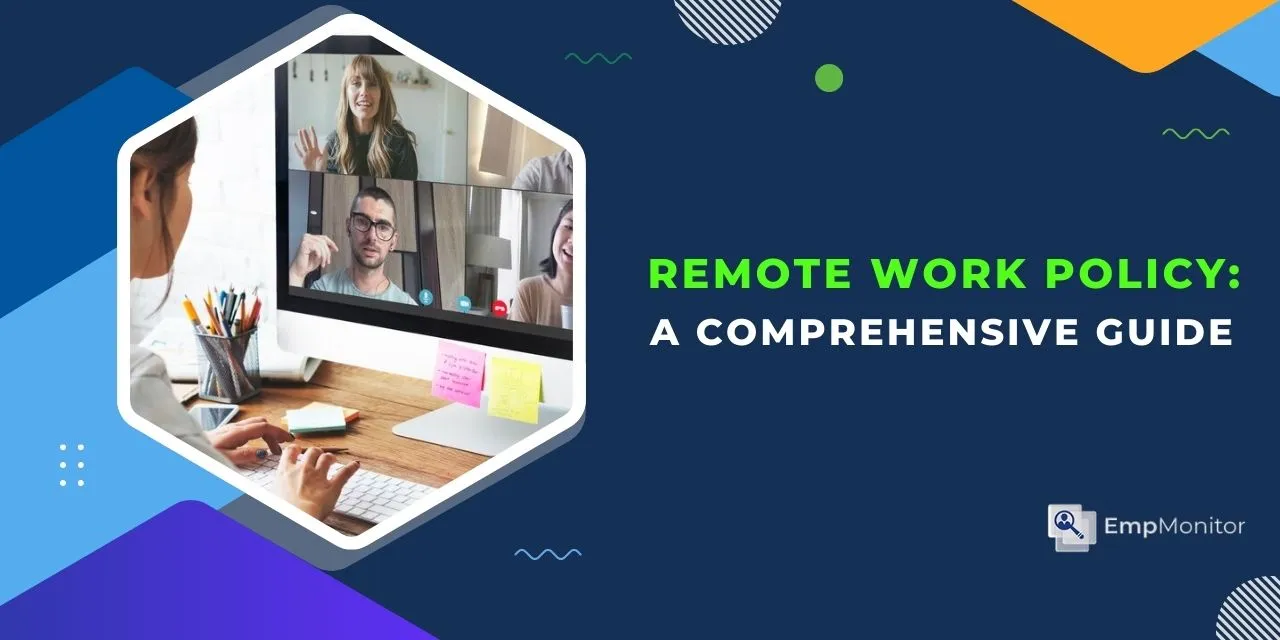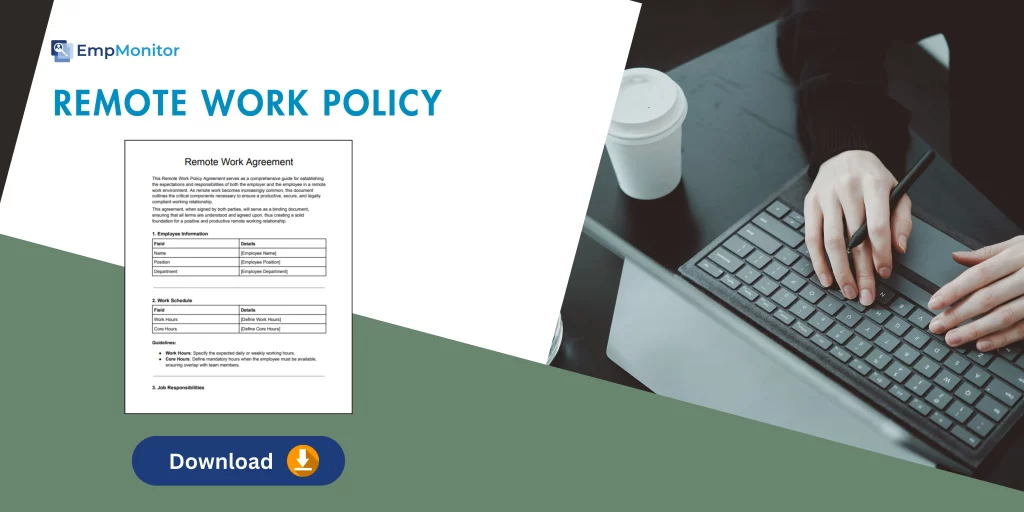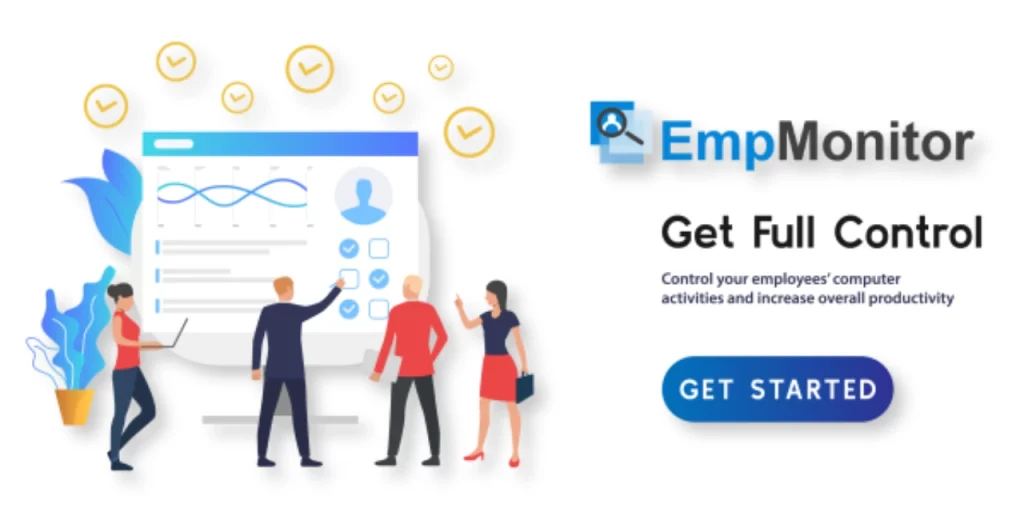As remote work becomes a permanent fixture in the modern workplace, establishing a clear and comprehensive remote work policy is more important than ever. This policy serves as a roadmap, guiding both employers and employees through the expectations, responsibilities, and best practices for working outside the traditional office environment.
This policy provides a structured approach to managing employees who are not physically present in the office. So, this blog will serve as a comprehensive guide for the remote work policy, let us get started.
Listen To The Podcast Now!
What Is A Remote Work Policy?
A remote work policy is a formal document that outlines the expectations, guidelines, and employees’ responsibilities outside the traditional office environment. This policy helps streamline operations, mitigate risks, and create a consistent framework that supports remote work.
It’s not just about setting rules, it’s about creating a framework that fosters productivity, maintains accountability, and supports a healthy work-life balance.
Whether you have been managing a seasoned remote team or just transitioning to this model for the first time, understanding and implementing a robust remote work policy is crucial for long-term success.
Key Elements of a Remote Work Policy
- Eligibility Criteria
- Specify the roles and employees eligible for remote work.
- Consider job functions, performance metrics, and tenure.
2. Work Schedule and Availability
- Specify core working hours and availability expectations.
- Incorporate recommendations for flexible scheduling and time zone adjustments.
3. Communication Protocols
- Outline preferred communication tools and frequency of check-ins.
- Establish expectations for virtual meetings and response times.
4. Performance and Accountability
- Define key performance indicators (KPIs) and productivity metrics.
- Include methods for tracking progress and providing feedback.
5. Technology and Security
- Detail the technology requirements and support provided.
- Include cybersecurity measures and data protection protocols.
6. Legal and Compliance Issues
- Address labor laws, tax implications, and confidentiality agreements.
Include guidelines for reporting work-related injuries. - These were some key elements of a remote work policy. Let us explore some examples.
Remote Work Policy Examples
These are some real-life examples to understand how companies have their remote work policy:
Example 1: Automattic
Automattic is the parent company of WordPress.com. It has a fully distributed workforce. Their remote work policy emphasizes flexibility and autonomy, allowing employees to work from anywhere. They provide a generous home office stipend, encourage regular team retreats, and use various communication tools to stay connected.
Example 2:
Buffer Buffer operates as a fully remote company with employees in over 15 countries. Their remote work policy focuses on transparent communication and detailed documentation. They use asynchronous communication to accommodate different time zones and offer flexible working hours to promote work-life balance.
We have become familiar with companies’ operations and remote work policies. Now, let us learn to create guidelines for your company.
Create Your Remote Work Guidelines
Creating comprehensive remote work guidelines involves addressing the unique needs and organization’s challenges. Here is how you can set up work-from-home guidelines by following these steps:
Step 1: Define the Scope and Purpose
Clearly articulate the purpose of the remote work policy and the scope it covers. It includes defining remote work, explaining its benefits, and outlining the policy objectives.
Step 2: Identify Eligible Roles
Determine which roles are suitable for remote work. Consider the nature of the job, the need for in-person collaboration, and the employee’s past performance.
Step 3: Establish Communication Protocols
Set clear expectations for communication. It includes defining the primary communication tools (e.g., Slack, Zoom), frequency of meetings, and availability requirements.
Step 4: Outline Performance Metrics
Establish how performance will be measured. It could include regular check-ins, progress reports, and productivity tracking. This will promote accountability among employees.
Step 5: Provide Technology Support
Detail the technology and tools to remote employees. It might include laptops, software licenses, VPN access, and cybersecurity training.
Step 6: Address Legal and Compliance Issues
Make sure that your remote work policy complies with local labor laws to avoid any legal conflict. It includes considerations for overtime, tax implications, and data protection laws.
Step 7: Craft A Remote Work PolicyTemplate
Develop a template for remote work agreements that outlines the terms and conditions for remote work arrangements. Both the employer and the employee’s signature should be mandatory.
Next, we will be covering some best practices for remote policy.
Remote Workforce Policy Best Practices
- Flexibility and Autonomy
- Allow employees to manage their schedules within the defined framework.
- Avoid micromanagement and trust your employees.
2. Regular Check-ins and Feedback
- Discuss challenges and ask for progress by conducting one-on-one meetings.
- Offer actionable feedback and guidance to empower employees to achieve their best.
3. Emphasize Results Over Hours
- Focus on the output and quality of work rather than the number of hours worked.
- Avoid employee burnout by allowing for a break to relieve stress.
4. Promote Work-Life Balance
- Encourage a balanced approach to work-life.
- Provide mental health resources and promote wellness initiatives.
Implement these best practices to maximize the output for your remote workforce. Now it is time to read a case study of GitLab’s policy.
Case Study: GitLab’s Remote Work Success
GitLab, a leading DevOps platform. It has over 1,300 employees in 65 countries and operates as an entirely remote company. Their remote work policy is built on transparency, collaboration, and inclusivity. Here are some key elements of GitLab’s remote work strategy:
Comprehensive Documentation: GitLab maintains an extensive company handbook publicly available online. This handbook covers all aspects of remote work, from onboarding to performance reviews.
Asynchronous Communication: To accommodate employees across different time zones, GitLab relies heavily on asynchronous communication. They use tools like GitLab, Slack, and Zoom to facilitate collaboration without requiring real-time interactions.
Remote Work Stipend: GitLab offers a stipend to support home office expenses, internet fees, and co-working space memberships.
Focus on Results: GitLab emphasizes results over hours worked. They use key performance indicators (KPIs) and regular check-ins to track progress and provide feedback.
Implementing A Work From Home Agreement
A work from home agreement is a formal document that outlines the terms and conditions for an employee’s remote work arrangement. It ensures the employer and the employee understand their responsibilities and expectations. Here is a guide to crafting a work-from-home agreement:
Key Components of a Work from home agreement for remote work policy:
1. Employee Information
- Include the employee’s name, position, and department.
- Specify the duration of the remote work arrangement (e.g., temporary, permanent).
2. Work Schedule
- Define the expected work hours and availability.
- Include any flexibility in scheduling and core hours.
3. Job Responsibilities
- Outline the employee’s primary job responsibilities and tasks.
- Include any changes in duties due to the remote work arrangement.
4. Communication And Reporting
- Specify the communication tools and frequency of check-ins.
- Define progress and performance reports.
5. Equipment And Technology
- Make a List of the equipment, tools, and technology the employer provides.
- Include guidelines for maintaining and securing company equipment.
6. Confidentiality And Data Security
- Outline the employee’s responsibilities for protecting company data.
- Include any specific cybersecurity measures and protocols.
7. Legal and Compliance
- Make sure the agreement does not violate the labor laws and regulations.
- Include clauses for tax implications, overtime, and work-related injuries.
These key components form the foundation of an effective remote work agreement. Up next, we will find a sample remote work agreement template so you can customize it to meet your company’s needs.
Also Read
WHAT IS REMOTE WORK? WHY IS IT IMPORTANT FOR BUSINESS?
7 STEPS TO SETUP AN EFFECTIVE WORK FROM HOME POLICY
Sample Remote Work Policy Agreement Template
Below is a sample template for a remote work agreement. This customizable template to fit the specific needs of your organization.
Remote Work Agreement Template
Use this remote work policy agreement template to build trust and accountability within your remote team. To take it a step further, consider adding remote employee monitoring software. If you’re looking for the perfect tool, your search ends here!
EmpMonitor – Employee Monitoring Software
EmpMonitor is an advanced workforce management software designed to manage and monitor your remote teams. Its robust features offer detailed insights into employee activities, tracking productive hours, and ensuring real-time updates, EmpMonitor helps organizations maintain high productivity levels and accountability in their remote teams. Here is a detailed look at its key features and how they can benefit you in keeping the remote work policy:
Working Hours Tracking
Empmonitor allows you to track every minute of employee working hours to eliminate unnecessary time gaps and boost productivity. It helps you boost productivity and ensure that every work hour is utilized effectively by providing detailed insights into how time is spent.
Clear Insight With Automated Screenshots
With EmpMonitor, you can receive automated screenshots at customizable intervals, giving you a clear view of your team’s workflow right on one easy-to-use dashboard. This feature helps managers quickly and easily review employee activities, making it simpler to keep track of progress and ensure everything is running smoothly.
Insightful Reports
EmpMonitor generates graphic-rich analytical reports and automated timesheets.
These reports offer a clear visualization of employee engagement and productivity, enabling managers to perform thorough team analyses and make informed decisions.
App & Website Usage Monitoring
EmpMonior tracks website and app visits to avoid unnecessary usage of time.
This helps managers identify distractions and ensure that employees are focused on their work, thereby maintaining a high productivity level.
Stealth Mode Monitoring
EmpMonitor runs quietly in the background, staying hidden from the programs list and Task Manager. It’s designed to track activity without interrupting your team’s work or making them feel watched, ensuring a smooth and respectful monitoring experience.
Alerts & Notifications
Establish clear boundaries and receive timely alerts to stay informed about any periods of employee idleness, inefficient work habits, or unexpected downtime. This feature helps you address issues quickly and ensures that your team remains focused and productive.
Conclusion
Creating an effective remote work policy is essential for organizations navigating the evolving landscape of remote work. Promote transparent communication and leverage the right tools by establishing clear guidelines. Companies can foster a productive and engaged remote workforce.
A well-crafted remote work policy enhances productivity and boosts employee satisfaction and retention. As remote work continues to grow in popularity, organizations that invest in comprehensive remote work policies will be better positioned to thrive in the future of work.
FAQ Section
1. What are some common challenges in implementing remote work policies?
Answer – Implementing remote work policies can present several challenges, including:
1. Communication Barriers: Remote work can lead to communication gaps due to different time zones, lack of face-to-face interactions, and reliance on digital tools.
2. Technology and Infrastructure: Ensuring all employees have access to the necessary technology and a stable internet connection can be a hurdle.
3. Productivity Tracking: Monitoring employee productivity without seeming intrusive or micromanaging can be difficult.
4. Maintaining Company Culture: Fostering a strong company culture and team cohesion can be challenging when employees are not physically together.
5. Data Security: Protecting sensitive company data and ensuring secure remote access can be a significant concern.
6. Legal and Compliance Issues: Adhering to various labor laws, tax regulations, and compliance requirements across different regions can complicate remote work policies.
2. How can I ensure accountability for remote employees?
Answer:
Ensuring accountability for remote employees involves several strategies:
1. Clear Expectations: Set clear goals, deadlines, and performance metrics so employees know what is expected of them.
2. Regular Check-ins: Schedule regular one-on-one and team meetings to discuss progress, provide feedback, and address issues.
3. Use of Monitoring Tools: Implement employee monitoring software, like EmpMonitor, to track work hours, app and website usage, and productivity. Ensure transparency about the use of such tools.
4. Performance Metrics: Use key performance indicators (KPIs) and detailed reports to evaluate employee performance objectively.
5. Frequent Communication: Foster open communication through various channels, such as emails, chat platforms, and video calls, to keep everyone connected and informed.
6. Recognition and Rewards: Acknowledge and reward employees for their hard work and accomplishments to motivate and encourage accountability.
7. Detailed Documentation: Maintain thorough documentation of work processes, expectations, and performance evaluations to ensure clarity and consistency.
Organizations can create an effective and accountable remote work environment by addressing these challenges and implementing these strategies.
What is a Remote Work Plan?
A remote work plan is a strategic framework designed to enhance productivity and streamline remote work for employees. It should outline clear guidelines for remote workers and provide a comprehensive, detailed approach that integrates seamlessly across the organization.














